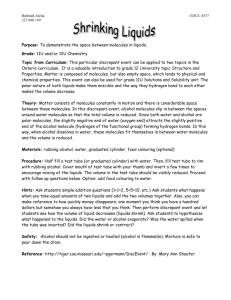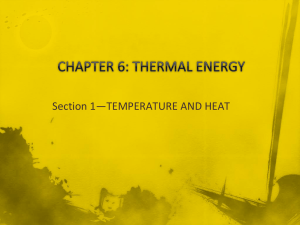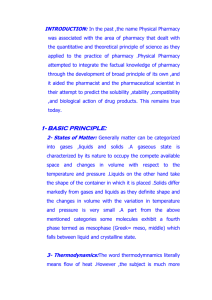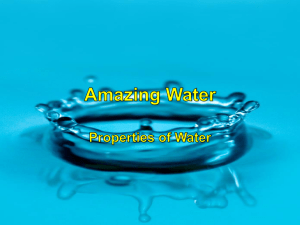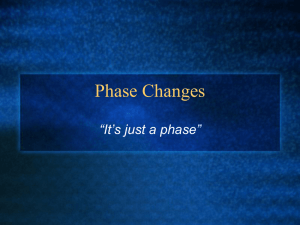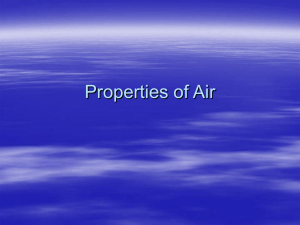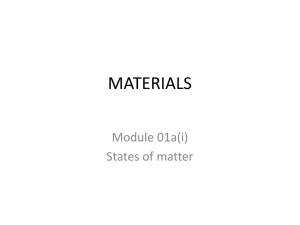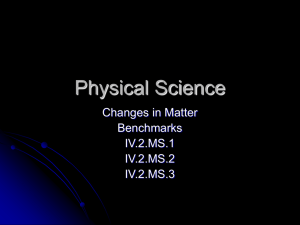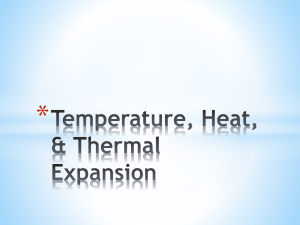10-30 Whats the Matter
advertisement
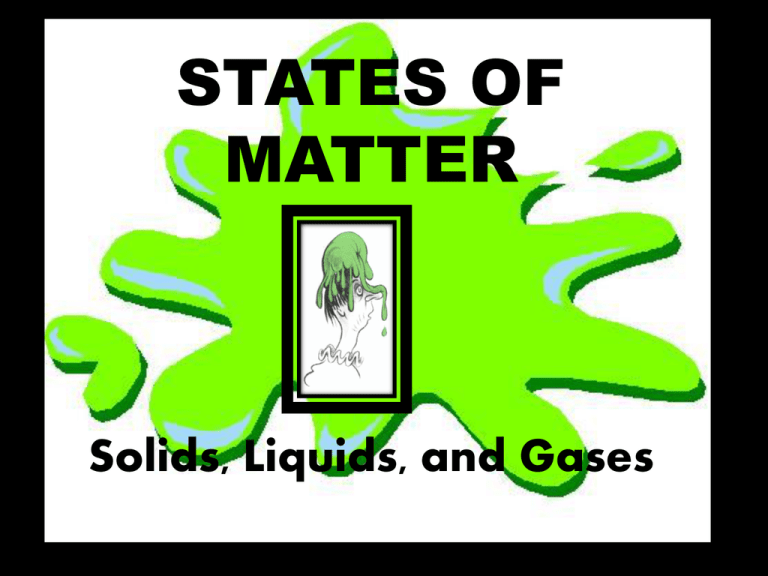
STATES OF MATTER Solids, Liquids, and Gases Matter • Matter is anything that takes up space. • Everything on earth is matter. • Matter exists in three states: • Solids • Liquids • Gases Solids • A solid does not change size or shape when it is moved. • You can measure the shape and the mass of a solid. • Molecules of a solid are packed together tightly and don’t move. • Examples: book, apple, shoes • Can you think of anymore? Liquids • Liquids do not change size. • Liquids do change in shape and take the shape of the container they are in. • Molecules of a liquid are packed loosely and move. • Examples: water, juice, syrup • How do liquids look and feel? Gases • A gas is matter that fills many kinds of things by changing its size and shape. • For example, bubbles, balloons, and balls are filled with gas. Air is also a gas. • Molecules of a gas are spread far apart and move quickly. • Can you think of another example? Mixture • Made up of two or more different substances which are mixed but are not combined chemically. • Can be classified as solutions, suspensions or colloids. • Ex. Trail Mix, Air Solution A homogeneous mixture Molecule-sized particles The solvent dissolves the solute Transparent so light can pass through them • Ex. Salt water; Iced Tea • • • • Suspension • A heterogeneous mixture • The size of the particles is great enough so they are visible to the naked eye. • Opaque or Murky so light cannot pass through • Separate on standing or by filtration. • Ex. Blood, Oil & Water Colloid • A mixture that has medium-sized particles (in between solutions & suspensions) • Remain evenly distributed without settling out • Made of two parts - colloid particles and a dispersing substance • Classified based on state of matter of the two parts • Ex. Jelly, Milk Types of Colloids • Aerosol - liquid dispersed in a gas ex. fog, mist, clouds • Foam - gas dispersed in a liquid ex, soda (CO2 dissolved in water), whipped cream • Solid Foam - gas dispersed in a solid ex. Styrofoam, plaster • Emulsion - liquid dispersed in a liquid ex. butter, milk • Gel - liquid dispersed in a solid ex. Jello, starch solution • Solid Aerosol - solid dispersed in a gas ex. smoke, dust • Sol - solid dispersed in a liquid ex. blood, ink, paint Oobleck • How to make Oobleck • Oobleck Lab • Story Phase Changes • A change from one state of matter (solid, liquid, gas) to another. • Physical change because appearance is changed, not chemical make-up; reversible. • Heat energy is either absorbed (molecules speed up) or released (molecules slow down) • Ex. Melting: Ice to water; heat absorbed Types of Phase Changes Melting • Phase change from a solid to a liquid • Molecules speed up, move farther apart, and absorb heat energy Freezing • Phase Change from a liquid to a solid • Molecule slow down, move closer together and release heat energy. Vaporization (Boiling) • Phase change from a liquid to gas. It occurs at the boiling point of matter. • Molecules speed up, move farther apart, and absorb heat energy. Evaporation • Phase change from a liquid to a gas on the surface of a liquid (occurs at all temperatures) • Molecules speed up, move farther apart, and absorb heat energy. Condensation • Phase change from a gas to a liquid. • Molecules slow down, move closer together and release heat energy. Sublimation • Phase change from a solid to a gas. • Molecules speed up, move farther apart, and absorb heat energy. Deposition • Phase change from a gas to a solid. • Molecules slow down, move closer together and release heat energy.

